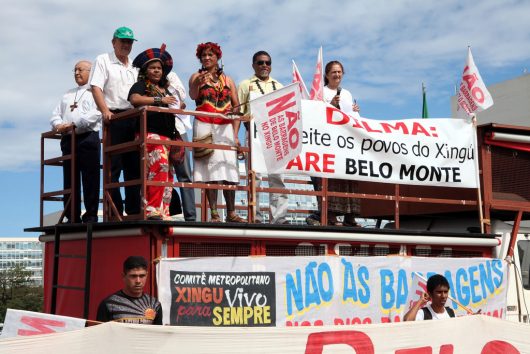Belo Monte Dam Progress Halted on Environmental Concerns
 This past April, a Brazilian federal court suspended construction of the Belo Monte Dam in the northern state of Pará. The suspension arose from concerns regarding the protection of the environment and the natural resources of the Amazon. Sanitation works in the city of Altamira must be completed before construction can resume.
This past April, a Brazilian federal court suspended construction of the Belo Monte Dam in the northern state of Pará. The suspension arose from concerns regarding the protection of the environment and the natural resources of the Amazon. Sanitation works in the city of Altamira must be completed before construction can resume.
Community and Forest Effects
The dam, which was scheduled to be completed in 2019, would be one of the world’s largest hydropower plants. As of April 2017, 10 turbines are already running, with plans to build 24 in total. The budget for the entire project is 30 billion Reais, or $9.6 billion.
The construction of the Belo Monte dam is a complicated issue. Droughts in southern Brazil led to energy shortages, increasing pressure on the Brazilian government to push forward construction of the dam.
Additionally, the desire to reduce Carbon emissions is a top priority for Brazil. Yet the deforestation and destruction of local communities due to dam construction are also pressing concerns.
The Belo Monte dam complex partially blocks the Xingu River, one of the major Amazon tributaries. The blockage forced the construction of a new channel, which has inadvertently flooded thousands of acres of rain forest. It is reported that many low-lying islands have been submerged and deforestation is occurring as a result.
Hydroelectric Dam Disruption
The construction of the dam disrupted the natural flow of rivers through the rain forest. It also forced many of the local inhabitants, primarily river dwellers and fisherman, to abandon their current lifestyle and relocate to urban areas. The forced relocation and loss of current lifestyles and employments exacerbates the risk of falling into extreme poverty in an already poverty-stricken area.
There is a loss of water supply and fishing stocks in several regions of construction as well as the lack of social support and economic compensation provided for local communities, many of which have indigenous populations. This is a major catalyst for lawsuits filed by the national Indian protection agency (Funai) and the Inter-American Commission on Human Rights.
Hydroelectric dams, while currently favored not only in Brazil but throughout South America, are just one of several solutions for cleaner energy. Energy options powered by the sun or wind are also potential choices that could provide clean energy and reduce carbon emissions without contributing to deforestation.
As plans for the Belo Monte dam are reworked to better address certain environmental concerns, alternative forms of energy should also be considered as a way to reduce damage caused by hydroelectric dams.
– Nicole Toomey
Photo: Flickr
